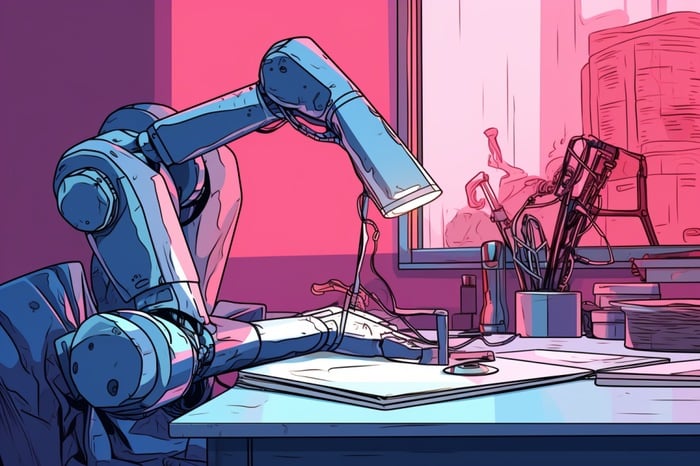The world of artificial intelligence (AI) and robotics is continuously evolving, with the recent document detailing Google’s RT-X and the highly anticipated rollout of the new ChatGPT Vision features at the forefront of these advancements. These technologies are pushing the boundaries of what is possible, leveraging diverse data and sophisticated algorithms to improve robotic models and interpret visual data in unprecedented ways.
This quick guide will provide an overview of the technologies being developed by Google, Microsoft and OpenAI advancing artificial intelligence and robotics learning to new levels. The Google DeepMind team explain a little more :
“We are launching a new set of resources for general-purpose robotics learning across different robot types, or embodiments. Together with partners from 34 academic labs we have pooled data from 22 different robot types to create the Open X-Embodiment dataset. We also release RT-1-X, a robotics transformer (RT) model derived from RT-1 and trained on our dataset, that shows skills transfer across many robot embodiments.”
Google’s RT-X is a prime example of the power of diverse data in enhancing robotic models. The RTX Endeavor, an evolution of the rt2 model, has been trained on a wealth of data from different universities and continents. This diverse data set has enabled the robot to understand complex commands and perform a variety of tasks, including picking up, moving, pushing, placing, sliding, and navigating. The use of diverse data has not only improved the robot’s capabilities but also allowed it to outperform specialist robots in a range of tasks. The rt2 model has since been upgraded to the rt1 X and rt2 X models, which continue to outperform specialist models.
The RTX Endeavor’s capabilities extend beyond simple tasks. The technology has been applied to robot arms and quadrupeds, demonstrating its versatility. This approach mirrors the training of large language models on massive web-scale text data, suggesting that similar techniques can be applied to robotics.
ChatGPT-4V Vision and Google RT-X robotic learning
Other articles you may find of interest on the subject of ChatGPT Vision :
GPT-4V(ision)
While the RTX Endeavor is making strides in robotics, GPT-4V Vision is revolutionizing the way AI understands and interprets visual data. This model outperforms GPT 4 Vision in visual question answering, showcasing its advanced capabilities. A report by Microsoft on large multimodal models highlights the impressive human-level capabilities of GPT Vision. The model can recognize celebrities, landmarks, dishes, and medical images, among other things. OpenAI explain
“GPT-4 with vision (GPT-4V) enables users to instruct GPT-4 to analyze image inputs provided by the user, and is the latest capability we are making broadly available. Incorporating additional modalities (such as image inputs) into large language models (LLMs) is viewed by some as a key frontier in artificial intelligence research and development.
Multimodal LLMs offer the possibility of expanding the impact of language-only systems with novel interfaces and capabilities, enabling them to solve new tasks and provide novel experiences for their users. In this system card, we analyze the safety properties of GPT-4V. Our work on safety for GPT-4V builds on the work done for GPT-4 and here we dive deeper into the evaluations, preparation, and mitigation work done specifically for image inputs.”
However, GPT-4V Vision is not without its limitations. The model can make errors, such as misinterpreting data or producing random numbers. It also struggles with exact coordinates and occasionally experiences hallucinations. Despite these challenges, the potential use cases of GPT Vision are vast. The model could be used in various applications, including reading academic papers, analyzing flowcharts, and recognizing emotions from faces. It can even navigate a house via images and propose a series of actions to perform a task.
The future implications of these technologies in AI and robotics are significant. As these models continue to evolve and improve, they will likely play an increasingly important role in various fields. The report suggests that GPT Vision’s capabilities could significantly improve with the development of models designed as multimodal from the start. This would allow the model to better understand and interpret diverse data, further enhancing its capabilities.
The advancements in AI and robotics, particularly Google’s RT-X and GPT-4V Vision, are transforming the way we understand and interact with the world. These technologies are leveraging diverse data and sophisticated algorithms to perform tasks and interpret visual data in ways that were previously unimaginable. Despite their limitations, the potential use cases and future implications of these technologies are vast, promising a future where AI and robotics play an increasingly integral role in our lives.
Filed Under: Guides, Top News
Latest aboutworldnews Deals
Disclosure: Some of our articles include affiliate links. If you buy something through one of these links, aboutworldnews may earn an affiliate commission. Learn about our Disclosure Policy.







